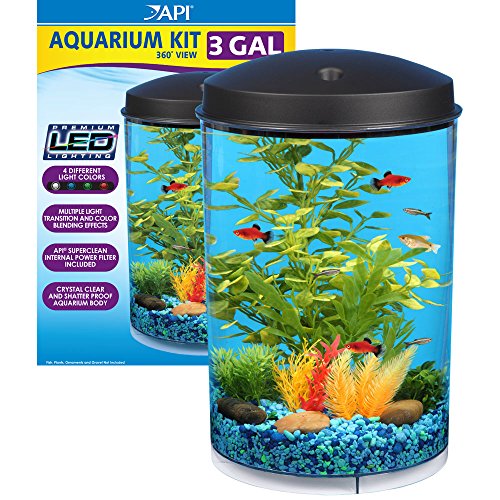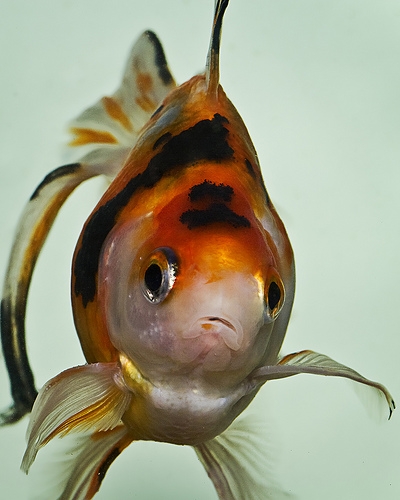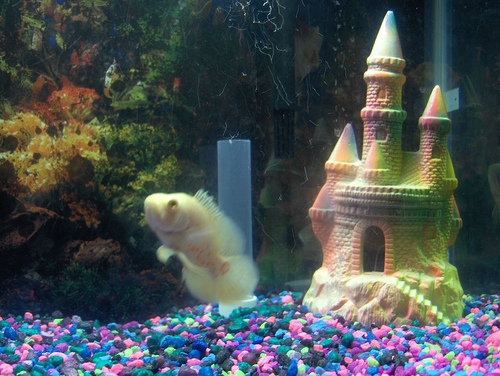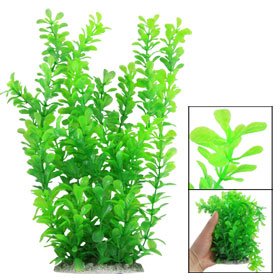Anyone who has had an aquarium knows that algae is unavoidable. It is just one of the things that fish owners, both salt and freshwater, have to deal with on a regular basis.There are four main variety's of algae; green algae, brown algae, red-brush algae, and blue green algae.
Green algae is the variety of algae that most people are familiar with. Green algae thrives in any aquarium that receives an abundance of light. The two most commonly seen green algaes in aquariums are hair algae and hard "green dot algae". Hair algae are long wispy strands of algae that are easily cleaned from the tank. The green-dot algae appears as green dots of algae on the side of the aquarium, it is very difficult and time consuming to remove green dot algae.
Once the aquarium has been properly installed it should be filled with saltwater. You can either purchase an already made saltwater solution or make your own. Once you have filled the tank you should let all of the equipment run for 24 to 48 on a test cycle to ensure that everything is working properly. Take this opportunity to test the temperature, salinity and pH of the water to ensure that the conditions are optimal for the breed of saltwater fish which are going to be inhabiting your aquarium (it is best to research this ahead of time-not all saltwater fish thrive in the same conditions).
Brown algae is unusual because it thrives in aquariums that do not receive a great deal of light. When brown algae appears in the tank the aquarium owner needs to clean the entire tank and increase the lighting. It is not unusual for brown algae to disappear when the tank conditions stabilize.
This is an example of minimizing Mother Nature's perfect filtration system in order to provide your fish with the perfect habitat. Hopefully you have chosen to artificially stimulate the cycling process so that it is well established prior to inserting your fish. If you have not it is very important that you keep a very close eye on them while the tank is undergoing its cycling process. The spikes in ammonia and nitrite levels can be severely harmful to fish if they are exposed to it for too great a period of time, and they will likely begin to show signs of distress during these periods of the cycling process. If this becomes severe their conditions can be aided by changing a portion of the water in order to dilute the concentration of these products.
Aquariums are beautiful in their own right, particularly ones which are large enough to make the viewer feel as though they have been transported into an underwater wonderland. For many individuals the inside of a clear glass aquarium is as close as they will ever come to the wonders of the world beneath the ocean's surface, and for that reason an aquarium which is as close to the natural habitat of its inhabitants as possible is a joy unto itself.
Use distilled water whenever you clean your saltwater aquarium or change the water. Changing your water every two to three weeks will limit the amount of time algae can grow in your tank. When you change the water make sure you vacuum your rocks. Also keep the use of additives to a minimum. Change your prefilter pad weekly.
Stock your tank with algae eating fish. In saltwater tanks this will be; hard star fish, Yellow Tang fish, Blennies, Turbo snails, Angel fish, and small Hermit Crabs.
Acrylic tanks come with their own advantages. There is almost no limit to the shape and size that an acrylic tank can take, allowing for a greater amount of creativity in tank design. It is also considerably more durable than glass, an important consideration if the aquarium is going to be displayed in a public place or if the owner has small children. Where a small bump may crack or otherwise damage a glass tank acrylic tanks are made of hardier stuff. It is also easier to adjust the filtration options on an acrylic tank, as it is not necessary to have the number of special tools available that are necessary to cut glass.

 How to Not Kill your Fighting Fish
A little over a year ago, my
How to Not Kill your Fighting Fish
A little over a year ago, my
 What Are the Causes of Ick in Fish?
What Are the Causes of Ick in Fish?
Wh
What Are the Causes of Ick in Fish?
What Are the Causes of Ick in Fish?
Wh
 How to Make a Salt Water Fish Tank
How to Make a Salt Water Fish Tank
How
How to Make a Salt Water Fish Tank
How to Make a Salt Water Fish Tank
How
 Aquarium Plants for Beginners
It is easy to see why so man
Aquarium Plants for Beginners
It is easy to see why so man
 How to Choose Fish for Mini Aquariums
How to Choose Fish for Mini Aquariums
How to Choose Fish for Mini Aquariums
How to Choose Fish for Mini Aquariums